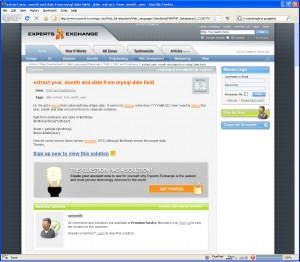In the 90’s that was a good rule of thumb: If the content for your webpage fills more than the browser window and forces people to scroll down to read it, split it up on to multiple pages.
That is no longer the case, for 3 reasons:
- People are used to scrolling down the page to see more content (and so use the right side of the touch pad on their laptop, the page down/up buttons, move the scroll bar with their mouse, or use the mouse scroll wheel)
- The most common way to scroll down is by using the scroll wheel on a mouse. Most people have a mouse with a scroll wheel
- More people are used to skim reading web content so if you split your content onto “page 1”, “page 2”, etc, you will slow them down, annoy them and lose them as visitors
What do you need to be aware of however, is “the false bottom”.
The false bottom is where elements on your webpage do not create an expectation that there is more content below. (You can’t rely on the user to notice that position of the scroll bar on the right hand side of the browser window.)
 Here is a screenshot of ExpertsExchange.com which shows a “false bottom”.
Here is a screenshot of ExpertsExchange.com which shows a “false bottom”.
In this example the user visits the page expecting an answer to their question (in fact Google helped build this expectation by providing a link to the page in the first place), but the user is frustrated to find that they will have to sign up to view it!
But in fact, all they have to do is scroll to the bottom of the page to view the answer.
The promotional message “sign up now to view this solution” and the visual element of the lightbulb in the grey box have created a false bottom so the user doesn’t realise there is more content below.
(In this particular case it seems ExpertsExchange.com have done this on purpose to motivate visitors to become subscribers, while providing the actual answer for Googlebot to index)
In summary, do not be concerned with the length of your web pages. Instead, learn how to write for the web, and be conscious of not creating “false bottoms”.

I agree. However it seems being “above the fold” on the Google SERPs is still important, the last research I looked at said 82% of clicks go to the top-5 search results.
Yes. Thanks for that completely off-topic remark Matthew 🙂